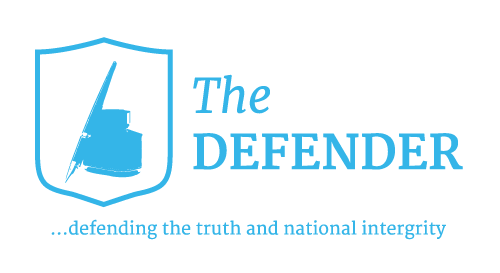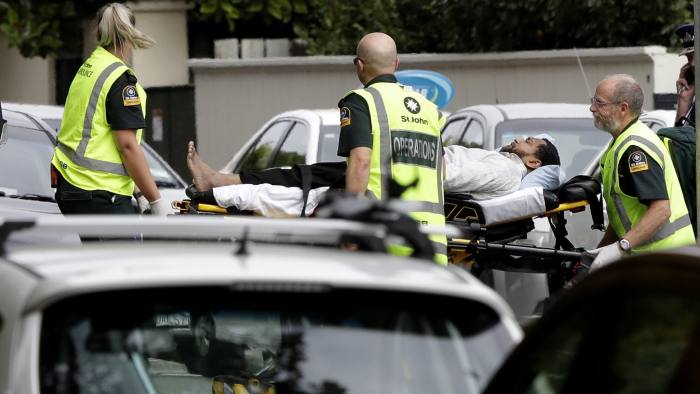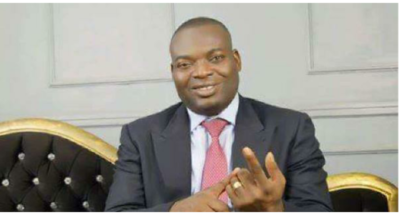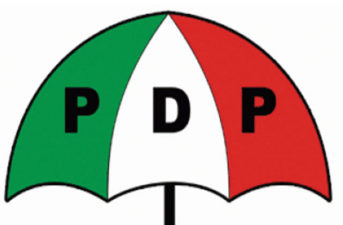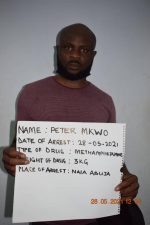At least 49 people were killed in an attack on two New Zealand mosques on Friday by a gunman the authorities said professed white nationalist views, in the deadliest case of rightwing terrorism since 77 people were murdered in 2011 by an anti-Muslim extremist in Norway.
A 28-year-old Australian has been charged with murder in Christchurch. A manifesto by a man claiming responsibility for the shootings said he had been inspired by Anders Breivik’s 2011 Norway attack and a 2015 shooting of a black church in South Carolina that killed nine people.
“It is clear that this can now only be described as a terrorist attack,” said Jacinda Ardern, New Zealand’s prime minister, adding that two others were also being held. “These are people who I would describe as having extremist views that have absolutely no place in New Zealand, and in fact have no place in the world.”
Police and officials described the shooting as well planned, adding that two bombs attached to suspects’ vehicles were defused before they detonated. They said the gunman produced a 17-minute video, filmed while apparently carrying out the attacks during Friday prayers at the mosques. In addition to the 49 killed, at least 48 people were left wounded.
The attack is the bloodiest of what terrorism monitors describe as a rising tide of rightwing violence worldwide, coming just five months after the shooting at a Pittsburgh synagogue that left 11 dead. It spurred outrage worldwide, with Pope Francis denouncing “senseless acts of violence”, the German foreign minister Heiko Maas labelling it “an attack on us all”, and US President Donald Trump calling it a “horrible massacre”.
However, Mr Trump added later that he did not think that white nationalism was a “rising threat” in the world. “I think it’s a small group of people that have very, very serious problems,” the US president said. “If you look what happened in New Zealand, perhaps that’s the case. I don’t know enough about it yet . . . but it’s certainly a terrible thing.”
The president telephoned Ms Ardern and offered condolences, prayers and any assistance the US might be able to provide. News agencies said the New Zealand prime minister told reporters her response to Mr Trump: “My message was: to offer sympathy and love to all Muslim communities.”
In Christchurch, witnesses described dozens of bodies strewn in and around the attack sites, particularly at the Al Noor Mosque, where at least 41 of the 49 were killed. Children’s cries could be heard on the video recorded by the gunman and authorities said the young were among those wounded.
“I would never have expected anything like this to happen in Christchurch, I’d never expect this to happen in New Zealand,” said Lianne Dalziel, the city’s mayor.
The shooting has again cast a spotlight on the role social media has played in spreading white nationalist and extremist views. In addition to posting the manifesto on Facebook, the shooter streamed a video of the attack on the network, which quickly spread to other sites, including YouTube and Twitter.
Facebook said it deleted the gunman’s accounts after being alerted by police, but the video was still widely available hours after the attack.
The Twitter account of the self-proclaimed gunman included pictures of a gun said to have been used in the shooting. It was covered in white lettering, featuring the names of others who had committed race or religion-based killings, as well as Cyrillic, Armenian and Georgian references to historical figures and events and the phrase: “Here’s Your Migration Compact”.
Australian media, citing government officials, identified the gunman as Brenton Tarrant from the city of Grafton on Australia’s east coast. Scott Morrison, Australia’s prime minister, described him as an “extremist, rightwing violent terrorist”.
Ahmad Al-Mahmoud, who was in one of the Christchurch mosques, told the Stuff.co.nz news website that the shooter was wearing army-style camouflage clothing and a helmet and that he carried a large gun with lots of ammunition.
“He came through and started shooting everyone in the mosque, like everywhere. And they had to smash the door, the glass in the small door, and everyone tried to get out — so we were trying to get everyone to run away from that area,” he said.
Mike Bush, New Zealand’s police commissioner, said investigators were still trying to determine whether the gunman had accomplices; it remains unclear whether the two other people detained, who were also armed, were involved in the plot, he said.
“There have been huge acts of bravery to apprehend these people, but let’s not assume that the threat is over,” Mr Bush said.
Police would not discuss the motives behind the attacks but they asked all mosques in New Zealand to remain shut, and advised people against visiting them.
A senior Turkish official said on Friday night that Turkey was investigating the suspect’s movements and contacts within the country: “Our initial assessment is that the perpetrator of today’s heinous terror attack in Christchurch, New Zealand, travelled to Turkey multiple times and spent an extended period of time in the country.
“We believe that the suspect may have travelled to third countries in Europe, Asia and Africa.” Security experts said the incident fitted the model of previous attacks by far-right extremists in the US and elsewhere, where small cells of perpetrators carry out co-ordinated operations.
“The manifesto that was published by the gunman and the live streaming of the attacks bears the hallmarks of classic rightwing terrorism and white supremacism,” said Paul Buchanan, director of 36th-Parallel, a consultancy focusing on geopolitics and strategic assessments.
